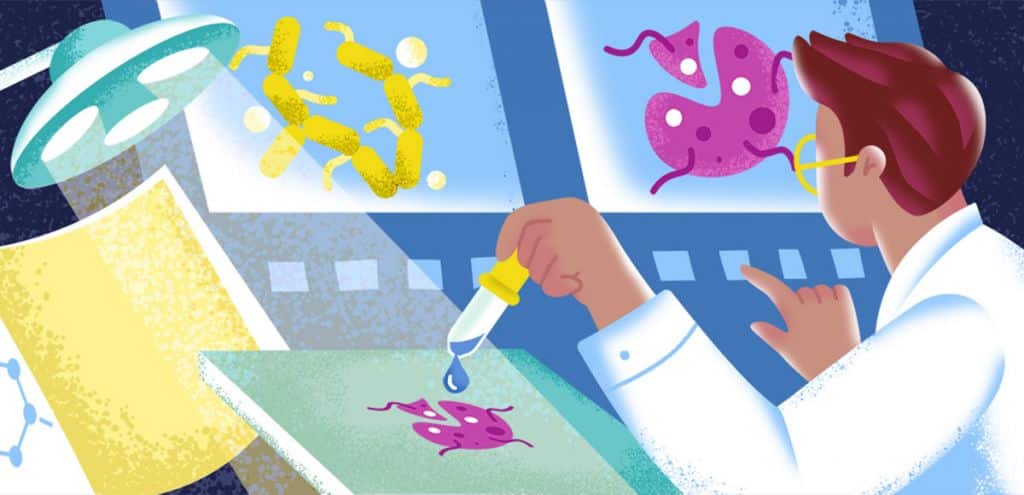A team of French organizations led by the biotech firm Antabio has launched a €17M project to deploy therapeutic, diagnostic, and economic innovations in the battle against antibiotic resistance.
The project, dubbed ARPEGE, involves four partners covering a variety of disciplines: the antibiotics developer Antabio; the diagnostics heavyweight bioMérieux; the university hospital group Hospices Civils de Lyon (HCL) paired with the International Centre for Infectious Disease Research; and the Toulouse School of Economics (TSE). The total budget of the four-year project is expected to be €17M, with almost €9M already provided by the French government.
The Covid-19 pandemic has shone a spotlight on the importance of treatments for infectious diseases. As innovations and investments are mobilized to fight the virus, antibiotic resistance is gaining recognition as a major threat.
“As we face a historic pandemic, ARPEGE is creating the synergies needed for a coordinated and effective French response to another imminent global challenge: antibiotic resistance,” said Marc Lemonnier, CEO of Antabio, in a public statement.
The goal of the project is to bolster defences against emerging antibiotic-resistant superbugs via four main strategies. The first is increasing the number of antibiotics on the market; €5.5M from the budget will help Antabio move its lead antibiotic candidate into clinical testing.
The second strategy involves improving diagnostic techniques. The focus of this effort is on bioMérieux’s artificial intelligence-assisted technology, which predicts which drugs bacterial infections are resistant or vulnerable to.
The third priority area centers on preventing the spread of superbugs in hospitals. With this aim in mind, HCL and bioMérieux are developing an automated surveillance system to track superbug outbreaks.
In an unusual move for life sciences collaborations, the project’s fourth priority is to explore the role of economics. The TSE aims to develop economic models that can incentivize companies to innovate in the field of antibiotic resistance.
Despite the looming crisis of antibiotic resistance, venture capital and big pharma interest in this field has stagnated. One key reason for this trend is that even if antibiotic drugs reach the market, they are used sparingly and must compete with cheaper existing drugs.
“The problem of market failure in antimicrobial resistance has been well known for some time now,” said Lemonnier. “Drug development in this space has been disincentivized due to the low potential revenues of novel antibiotics.”
“In addition, the fact that diagnostic tests are not being sufficiently used in clinical practice to identify the right antibiotic for the right indication is partly due to economic reasons.”
Economists have delved into the antibiotic resistance problem several times in the past. One influential UK report in 2016 suggested a range of solutions, including giving antibiotic developers financial rewards for getting drugs to the market.
“As a result of these previous initiatives, it is clear that we needed to create a more holistic solution to address this crucial healthcare problem by combining multiple elements of the antimicrobial resistance puzzle,” said Lemonnier.
According to Lemonnier, the ARPEGE project differs from previous efforts by introducing an operational element to the mix. The various therapies, diagnostics, and surveillance tools under development in the project will be analyzed by the TSE to get a handle on their value and commercial strategy.
One way to increase antibiotics in the pipeline is to pay drugmakers a set amount each year regardless of the doses used. This model, known as the subscription or ‘Netflix’ model, is being piloted in the UK. Sweden is making similar changes to ensure access to existing antibiotics, while the US is debating the adoption of a subscription model in the form of the Pasteur Act.
Nonetheless, the subscription model is still at an early stage with a lot of unknowns. For example, the model might encourage some companies to become ‘free riders’ without contributing enough doses.
“As global warming has shown, the economic incentives to free-ride are often stronger than the long-term collective interest, but the work done by economists can help policymakers by suggesting mechanisms to align individual incentives with collective interest,” said Pierre Dubois, Professor of Economics at TSE. He added that current pilot projects focus on antibiotics and largely ignore the key role of diagnostics.
Another drawback of the subscription model is that it would be very difficult to centralize across the EU member states. The European Commission is aware of the issue, and could make strides forward as it mulls over changes to its pharmaceutical legislation this year.
“We still have a long way to go before we can identify the best model to fix the antimicrobial resistance problem,” said Lemonnier. “It is unlikely that a single model will be fit for all.”
Cover image via Elena Resko





